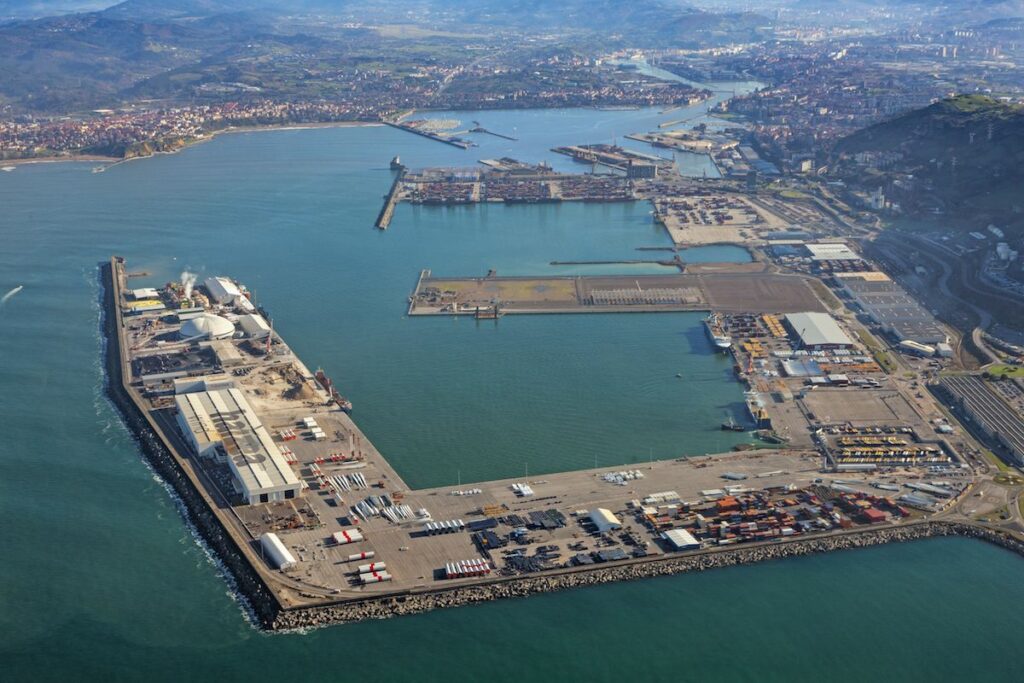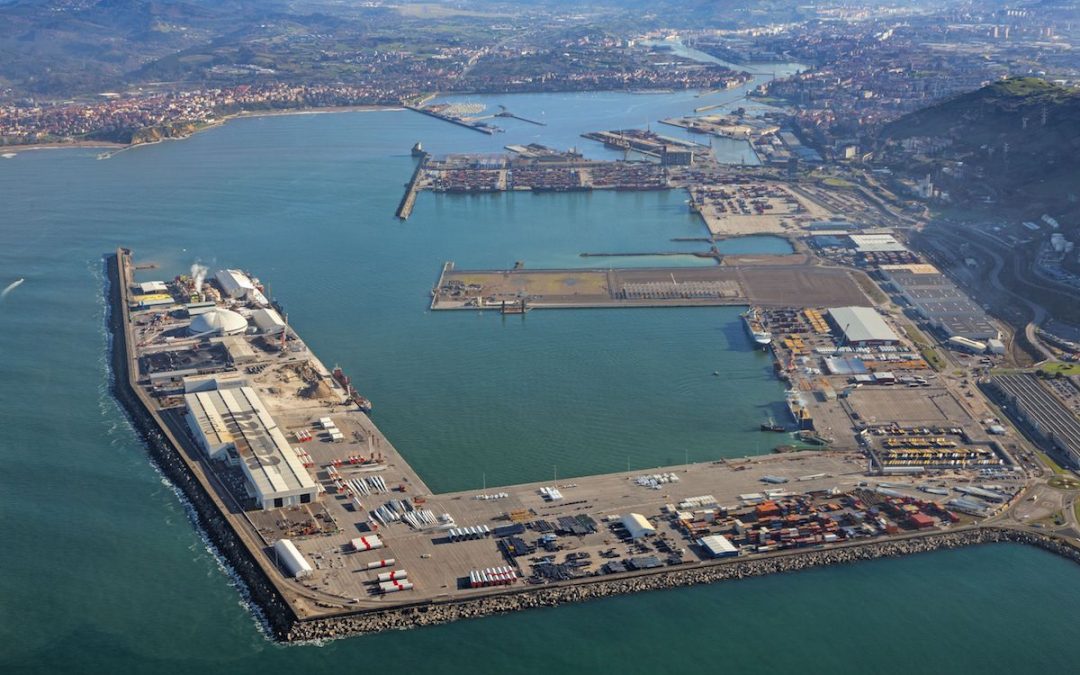Spanish Bilbao Port Authority has decided to supply electricity to ships docked at the port and install renewable energy power plants, making a firm commitment to the energy transition and the decarbonization of port activities.
As informed, the BilbOPS project will deploy onshore power supply (OPS) technology or supply of electricity on land, also known as cold ironing.
This technology allows ships to connect to the electricity grid during their stay in port, turning off their auxiliary diesel engines.
In this way, it is possible to avoid emissions of greenhouse gases (CO2, nitrogen and sulfur dioxide), vibrations and noise that are harmful to the environment.
The innovative project will allow the Port of Bilbao to make “a significant qualitative leap” in the Atlantic Europe to achieve the “Fit for 55” objectives of the European Union.
Specifically, the port is expected to reduce greenhouse gases by 40% and, with this project and other complementary measures, the port authority hopes to achieve the 55% emission reduction target established by the European Union for 2030.
To be able to successfully implement the project, the port held technical meetings with the shipping companies that use the Port of Bilbao and communicated with ports that make up the maritime corridors with Bilbao, in order to compare the facilities.
OPS infrastructure
With this project, which is divided into several phases, the port authority will equip seven docks where regular lines dock — containers, RoRo, RoPax, cruise ships and the new A5 dock — with the installations necessary to supply electricity to ships during their stay in port. The aim is that the auxiliary engines of ships can be turned off and still maintain essential services, such as transfer pumps, refrigeration systems, lighting or emergency equipment.
In the first place, it will be necessary to repower the power lines so that the facilities can offer 30 MW. For this purpose, three distribution centers, 11 transformation centers and 11 OPS connection points will be installed on the docks.
To generate a flexible infrastructure, 20 intakes will be available to provide service regardless of the docking point of the ships at the dock.
The areas to be upgraded are — the ferry terminal to handle RoPax traffic, where two OPS points will be located; the terminal for RoRo traffic at quay A6; the new dock A5; docks A1 and A2 for containers; and cruise ship docks.
To increase the power of the cruise ship docking area, a 1.34-kilometre submarine cable will be extended from Santurtzi.
Given that OPS facilities do not currently have standardized or approved patterns, and each ship requires a different power or has developed different technology to connect to the dock (on land or on ship), a versatile system will be chosen that can provide from 1 MW to 12 MW to be able to serve any type of vessel regardless of its length, GT, design or traffic.
Likewise, a system will be developed to produce a “zero crossing” coupling, that is, the OPS system network will be synchronized with the ship’s network without voltage cuts.
The repowering of all the docks will be carried out between 2022 and 2023.
The first dock with the OPS installed will be the A5 and the project is expected to be put out to tender throughout 2022.
With this action, the port is planned to serve 910 annual stopovers with the OPS service at the container, ferry and cruise ship docks.
In a later phase, the HIDROVAN project will be developed, a mobile floating platform that will generate electricity from H2, in collaboration with Petronor, Tecnalia and Ferrovial. Its purpose is to provide the OPS service to the rest of the docks that do not have points of connection.

Renewable energy hub
The energy transition plan, which will be finalized in spring, in addition to the electrification of the docks, will entail other associated or complementary actions such as the creation of renewable energy power plants in the port itself so that electricity has a zero-emission origin, making Bilbao a green energy hub.
Three projects will generate green energy:
- Photovoltaic solar energy: To achieve 6MW for self-consumption, photovoltaic panels will be provided inside the dykes or counter-dykes.
- Wave energy: A pilot project will be tested in Punta Lucero to take advantage of the wave energy that provides 1MW and see the possibility of being able to expand it and provide 12 MW.
- Wind power: The port already has a wind power plant that generates 12MW and is studying the placement of more wind turbines in facilities where the safety of ship docking is not hindered.
Complementary projects
The BilbOPS project promoted by the Bilbao Port Authority is complemented by other Petronor/Repsol projects.
On the one hand, in the coming years the Port of Bilbao is going to become the nerve center of the Basque Hydrogen Corridor – Basque Hydrogen Corridor (BH2C), a highly strategic project of global scope and world reference, linked to innovation and environmental sustainability, which will contribute to the reduction of CO2 emissions.
One of these projects consists of the construction, by Petronor and in the port itself, of one of the world’s largest plants for the production of synthetic fuels from green hydrogen, generated with renewable energy.
On the other hand, Repsol is building a liquefied natural gas (LNG) bunker terminal that will have a cryogenic tank with a storage capacity of 1,000 cubic meters.
EUR 51.8 million investment
This ambitious project requires, by the port authority, an investment of EUR 51.8 million ($57.7 million).
For its financing, a subsidy of 4.3 million euros has been obtained for the OPS of the A5 wharf through the Recovery and Resilience Mechanism and, in parallel, the necessary procedures have been carried out to request another co-financing from the EU for the rest of the docks.
Given the nature of the project, additional investments will be mobilized by private initiatives and innovative solutions. All this, together with other projects underway or approved will have an economic impact of approximately EUR 188 million, according to the port authority.
Source: Offshore Energy






